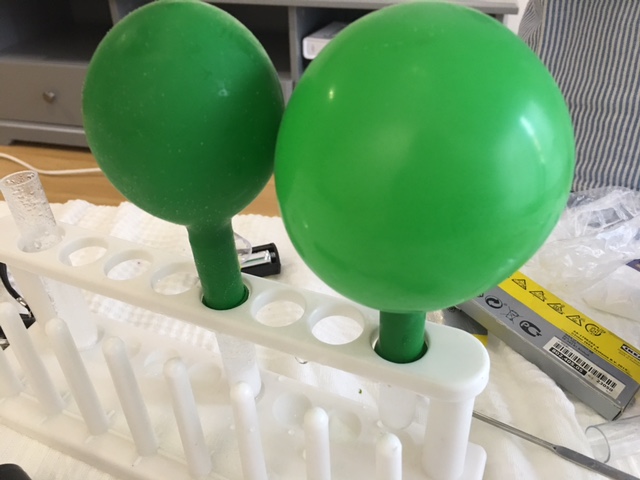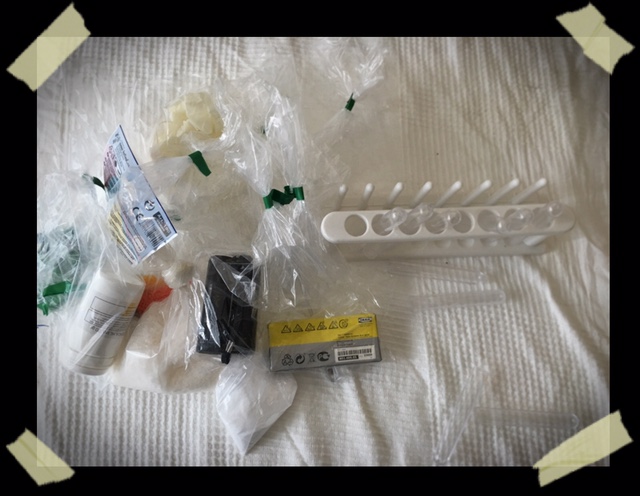SELF-EXPERIMENT SHEET SELF-INFLATING BALLOONS
| Theme | Acid-Base Reaction |
| Category | Experiments for Children, Chemistry Experiments |
| Main product | Citric Acid, Sodium Bicarbonate |
| Short description | In this experiment we are going to make balloons that inflate by themselves. The principle of the experiment is the same as the volcano experiment, which many of you already know. Baking soda is reacted with citric acid (or vinegar) and a very controlled reaction is produced which emits CO2. I prefer to use citric acid as it is much less messy and leaves less odour than vinegar, but you can substitute one for the other. |

In order to inflate the balloons, the only thing you have to do is to inflate them inside a container with a mouth that the balloons can be attached to. In short, it is a very simple experiment and the materials used are foodstuffs, so it does not seem dangerous for children. It is always a good idea to use gloves anyway.
Materials for the experiment:
- Sodium bicarbonate
- Citric Acid (can be substituted by vinegar)
- Test Tubes y Rack
- Balloons
- Water

I always get my materials from Alquera.com (Spain). In any case, these are simple materials that you can find anywhere. In the picture there are more materials than you need for the experiment.
Step 1. Citric Acid
Put on gloves ;). Then put citric acid (5 grams) in a test tube.
Step 2. Baking Soda.
Put baking soda in the same tube (5 grams).

Step 3. Pour in the water
Pour in water to fill the test tube, and you will see the reaction start automatically.
Step 4. Place the balloon and leave it on the rack.
Just after pouring in the water, we put the balloon in the tube by closing the mouth of the tube and leave it on the rack. We wait to see how the balloon gradually swells.
In case the steps are not quite clear, here Tomás explains them in more detail 😉.
Don't hesitate to leave your comments or questions 😉
